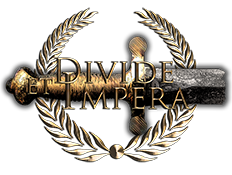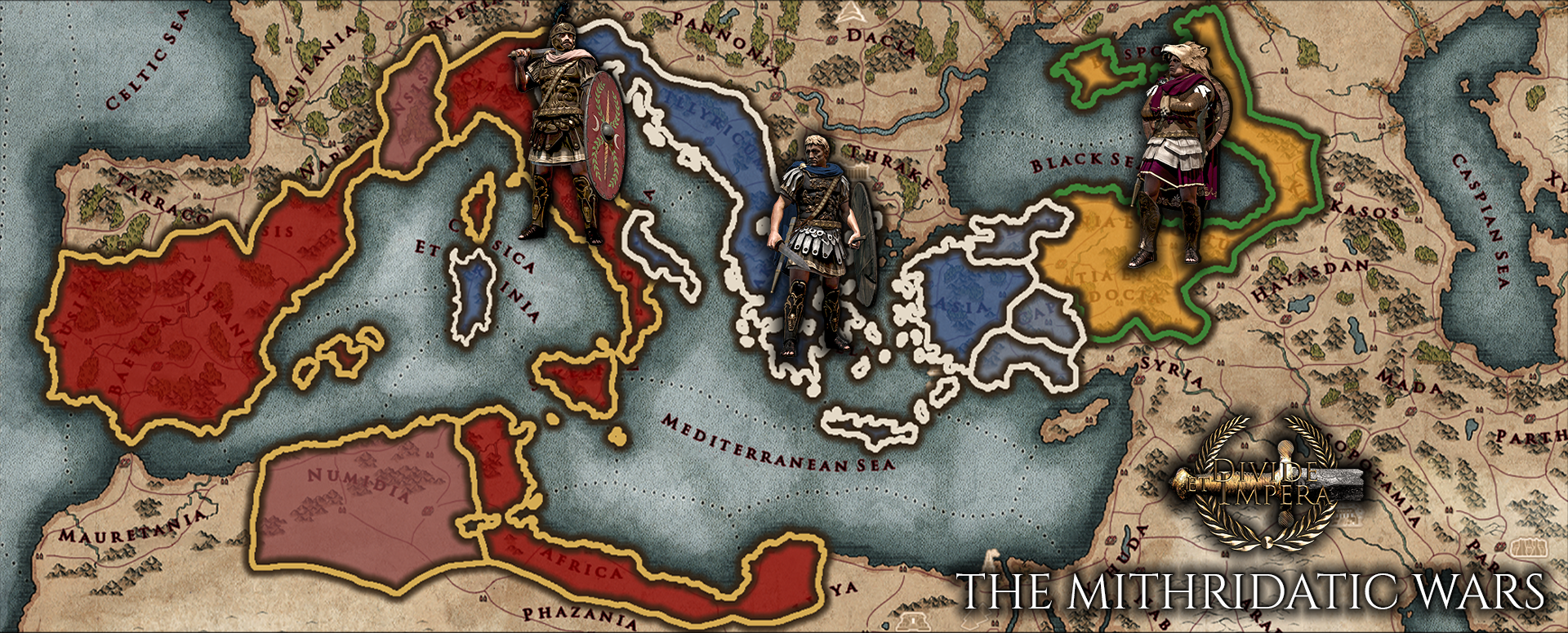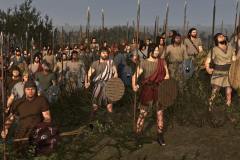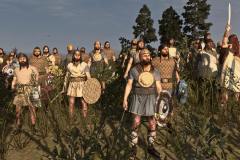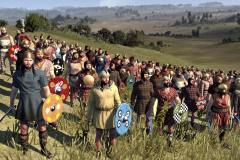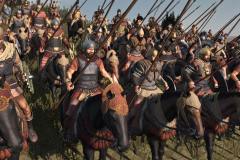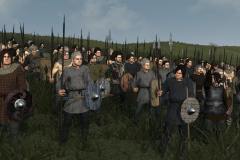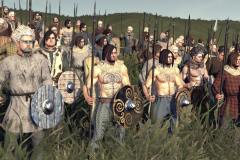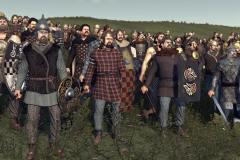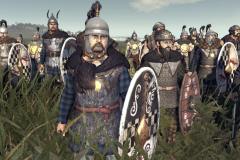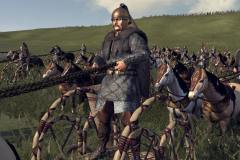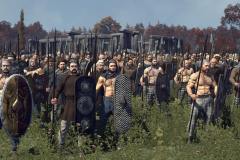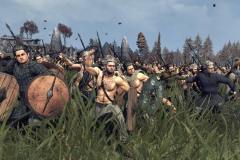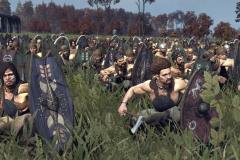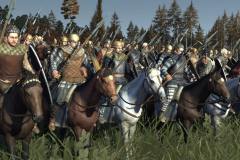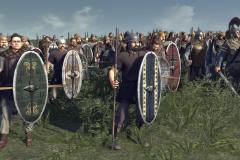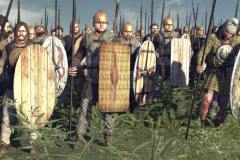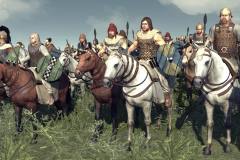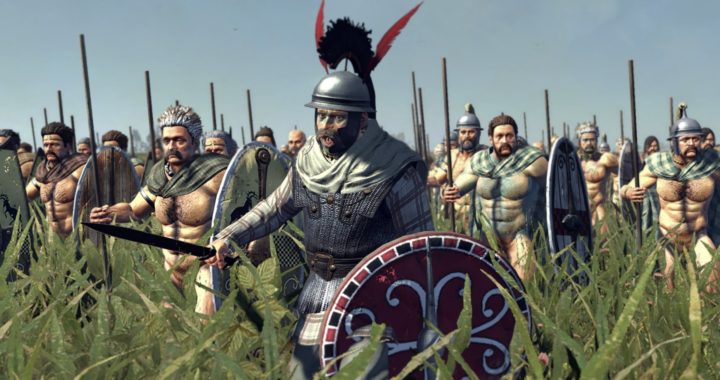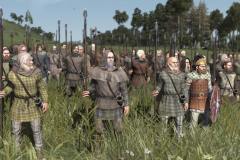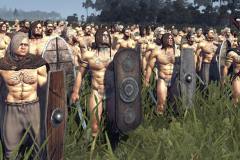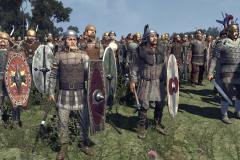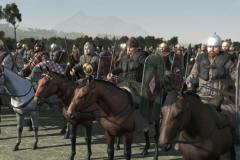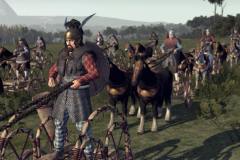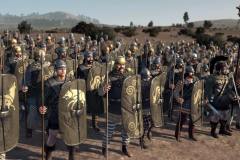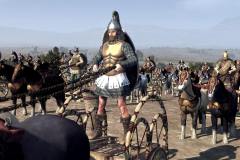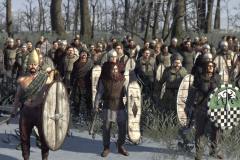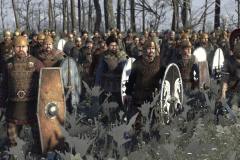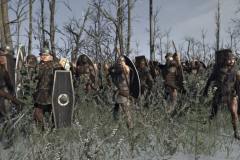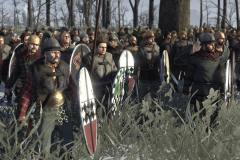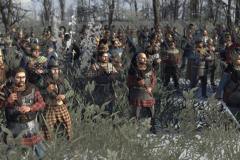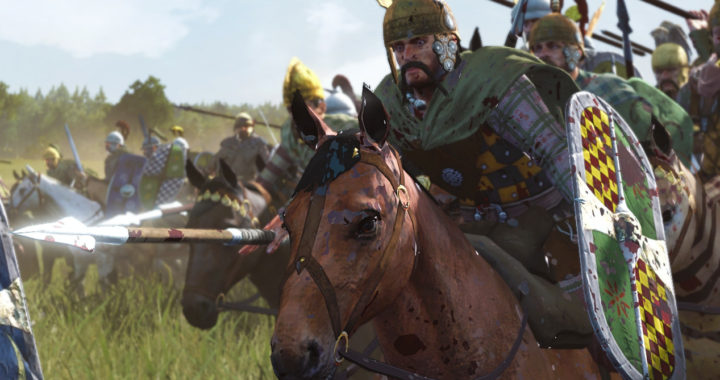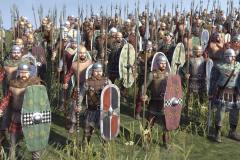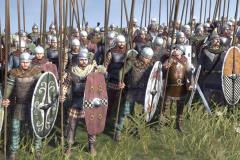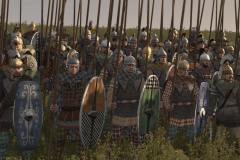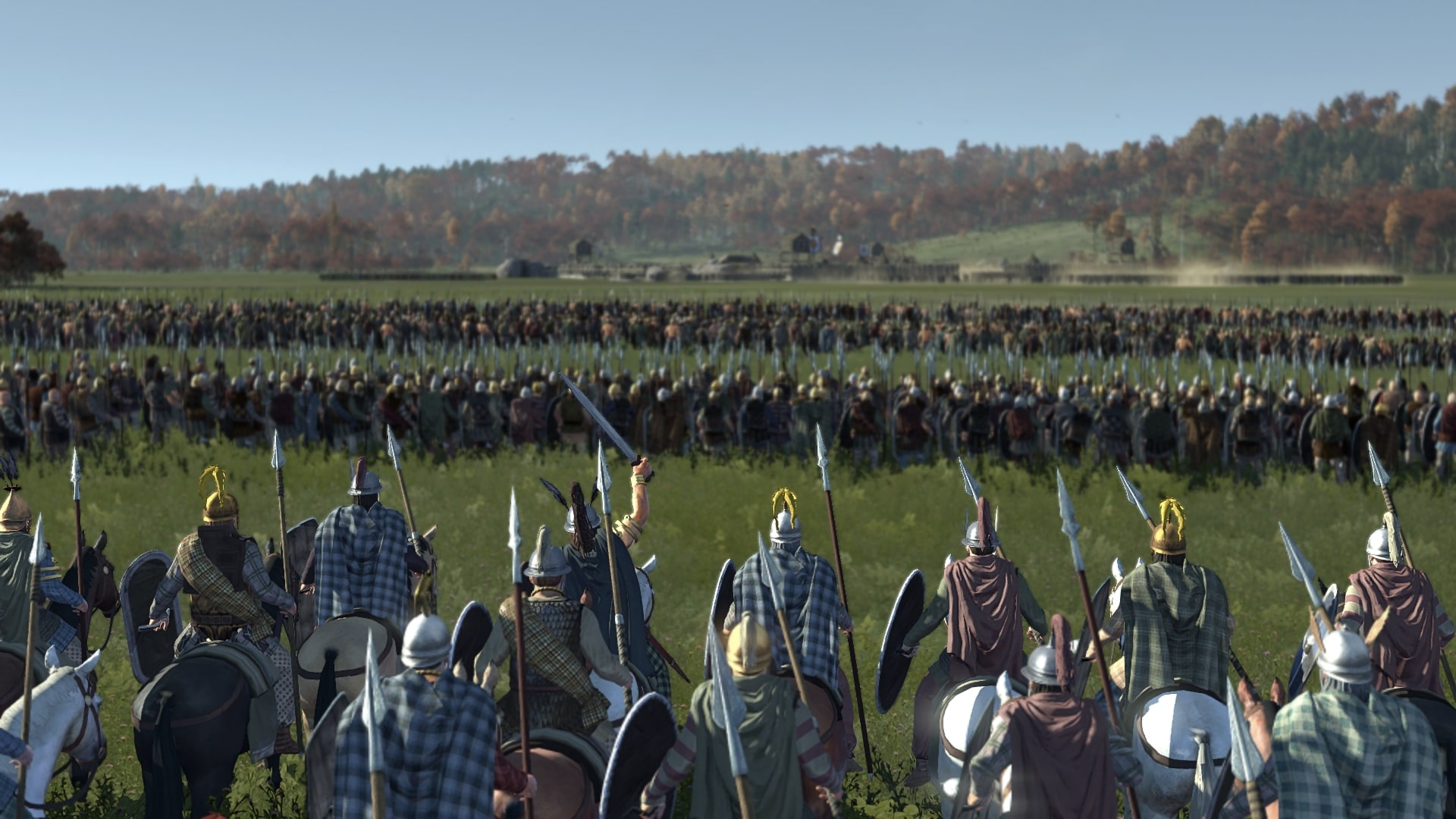Tag Archives: Preview
Previews for the mod.
1.3.1 Edetani Roster Preview
Edetani
While the Celtic tribes who migrated into Iberia a few hundred years before the DeI timeframe came to replace, adapt and assimilate many Iberian tribes to form a new Celtiberian identity, they didn’t quite expand into the entire peninsula. The Iberian tribes along the coasts south of the river Ebro retained their language and culture. Many of these tribes had contact with the early Phoenicians and later Carthaginians, as well as Hellenic traders and explorers establishing trade outposts and colonies along the coast. Because of this and the higher degree of urbanization than their Celtiberian cousins of the inland, tribes such as the Edetani, Cessetani and Turdetani were considered the most “civilized” tribes of Iberia.
The Edetani roster is a versatile one, with solid options across the board and a particularly wide selection of very high quality cavalry. While the roster includes typically Iberian units such as the Scutarii or Caetrati and devastating skirmishers, their aggressive lower tier infantry should not be overlooked, expendable but capable of baiting and outpositioning enemies due to their light equipment and high stamina. Finally, the Edetani has some of the best cavalry in Iberia, with excellent options for deadly skirmishing, agile light shock and tougher melee fighting. They also have some of the heaviest cavalry in the western world, with riders covered in chainmail and horses clad in scale.
1.3.1 Arevaci Roster Preview
The Arevaci
The Arevaci were a Celtiberian tribe occupying central Spain. Their capital, Numantia, was the focus of several major Roman campaigns during the late Second Century BC. They were famous for their metalworking, which gave their nation great wealth and power. As a Celtiberian tribe, the Arevaci combine Celtic and Iberian elements, although they trend more toward the latter. As a nod to their Celtic heritage, as well as their historically-attested use of an orange-sepia body paint, one of the Arevaci signature units is the Iberi Uirodusios (Celtiberian Painted Warriors), who are fast-moving, hard-hitting naked warriors. Other standout units include the Birikantinoi (Celtiberian Champions), who carry some of the finest swords available (benefits of excellent Iberian metalworking traditions). Like other Iberians, they also possess excellent missile units, with a special emphasis on javelins and slings. Their cavalry is excellent in quality and variety. In addition to excellent horse skirmishers, they possess light lancers and sturdy melee cavalry.
Iweriu Roster Overview
The Iweriu
Iweriu is the proto-Indo-European name from which Éire in modern Irish derives and is believed to have been a Gaelic matron goddess of the island’s sovereignty. One theory states that Her name is tied to fertility and Iweriu could mean “abundant land.” The island was shrouded in mystery for the earliest classical writers, some making sensationalist claims about wild barbarian practices such as ritual cannibalism and incest; or, that while growing grain is hard due to the harsh climate, “grass grows so richly that cattle burst if unrestrained from eating it.”
Iweriu tribes such as the Eblani, Iverni, and Coriondi were prolific ringfort builders, famed metalworkers and traded extensively with continental Europe and the British mainland. This trade continued and flourished during the Roman conquest of Britannia. While evidence suggests Rome briefly considered invading Hibernia also, the island remained free and sovereign until Roman decline and exodus from the Isles many centuries later.
As a faction lacking in heavy armor and cavalry, their focus is primarily about skirmishing and raiding with excellent javelin units who can make a good account of themselves in melee as well. They also possess decent options for shock infantry and many units adept at using terrain to their advantage to catch their enemies off guard.
1.3 Iceni Roster Preview
The Iceni
The Iceni were a British tribal group who lived in East Anglia, occupying areas of Norfolk, northeast Cambridgeshire, and the northern parts of Suffolk. They may be the same as Caesar’s Cenimagni who were interpreted as the Iceni Magni, or “great Iceni,” one of five “tribes” that submitted to Caesar after the Trinovantes came under his protection. In DeI, the Iceni are the representative type of the great British tribes inhabiting southeastern England.
The Iceni appear to have been a wealthy people interested in metalware and horses since archaeological finds of horse-related objects are common in their former territory. Like their neighbors, the Trinovantes and Catuvellauni, they were closely related to and heavily influenced by Belgic immigrants from across the English Channel. Throughout this era, there was a constant exchange of goods and people across the Channel, as seen by numerous items of Continental metalware found throughout this part of England. Additionally, burial practices common throughout eastern France and Belgium are also found in southeastern England, alongside native traditions. In DBG, Caesar reported that some of the British tribes supported the Belgae in their resistance to his invasion. Numerous Belgic and Gallic chieftains would later flee to Britain following Caesar’s conquest of Gaul. The impacts of this cultural exchange are seen throughout the Iceni and Nervii rosters.
In terms of gameplay, the Iceni are the most typically Celtic of the Britannic factions, with the best spears, swords and cavalry of the Isles, supplemented by chariots and slinger-spearmen. In return, they lack good shield wall units, armor penetration and other ranged options.
1.3 Barbarian Overhaul – Scordisci Roster Preview!
We hope you enjoy another Divide et Impera 1.3 preview from Q_Sertorius and CEMN, this time featuring the Scordisci! We also will have some news in the near future about a combined public beta for everyone to try out. Currently, you can find various sections of the beta available for testing on our Discord.
The Scordisci
The Scordisci were a Celtic tribe formed after the Gallic invasion of the Balkans that mixed with the local Thracians and Illyrians. Their tribal name may be connected to the Scordus, the Šar mountain. Extensive La Tène type finds of local production are noted in Pannonia as well as northern Moesia Superior, which attest to the concentration of Celtic settlements and cultural contacts. They controlled the various Pannonian tribes in the region, extracting tribute and enjoying the status of the most powerful tribe in the central Balkans. Their power was centered on Singidunum. They subjugated a number of tribes in Moesia, including the Dardani, several west Thracian tribes, and the Paeonians. From 141 BC, the Scordisci were constantly involved in battles against Roman-held Macedonia. Between 56 and 50 BC, the Dacians defeated the Scordisci, and became subject to the powerful Dacian ruler, Burebista. In 15 BC, Tiberius crushed the Scordisci. They became Roman subjects, providing valuable support for later campaigns against the Pannonians and Breuci. They started receiving Roman citizenship during Trajan’s rule (98–117 AD). With their Romanization, they ceased to exist as an independent ethno-political unit.
Visually, the Scordisci cross-cultural mix runs throughout the roster, from the lowest levy spearman to the noble Cordinau Orca, elite nobles wielding unique curved longswords. However, the Thracians stand out particularly in the Scordisci javelin units, and the Illyrians have a heavy presence in the Scordisci navies.
Check back soon for more beta news!
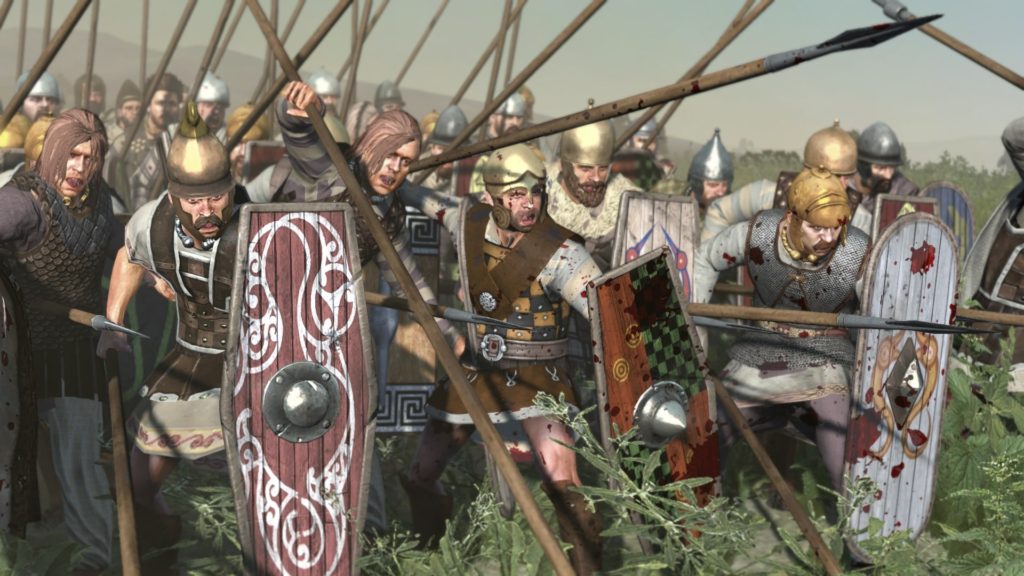
1.3 Barbarian Roster Overhaul – Nervii Roster Preview!
We are back again with another preview from Q_Sertorius and CEMN featuring the Nervii! These changes will be implemented in our upcoming mod update and can already be experienced in our current submod betas available on our Discord.
The Nervii
Caesar reported that the Belgae were the bravest of all the Gauls. Among the Belgae, the Nervii were particularly noteworthy in this category. For this reason, DeI uses them to represent the various Belgic tribes. The Nervii were reportedly very strong in infantry and this is reflected in their roster. The Nervii have solid and respectable infantry in each major category, possessing capable spear, axe, sword, phalanx, and missile units. Additionally, thanks to their fellow Belgae tribes, the Remi and Treveri, they also have very powerful cavalry (although not on the same widespread scale as the Arverni). On the whole, while the Nervii do not particularly excel in any given area, they have solid options across a broader range than most Celtic factions. The Nervii are probably the most well-rounded of any Celtic tribe in this overhaul.
Geographically, the Belgae lived in Northern France and Belgium. From this area, they spread across into southeastern England. Throughout the DeI time period, cultural influences followed trade routes back and forth. This is described not only in the historical sources, but can also be seen in the archaeological record. This cultural exchange is heavily reflected in the Nervii aesthetic. Additionally, the Belgae were also greatly influenced by their contact with Germanic tribes across the Rhine. These cultural connections are reflected throughout the faction in the appearance, equipment and way of fighting. For instance, some men grow long beards as a sign of manliness like the Germans, or lyme it to appear taller and frightening like the Britons, and use woad to paint their bodies in elaborate patterns to showcase their bravery and devotion to the gods.
More previews to come soon!
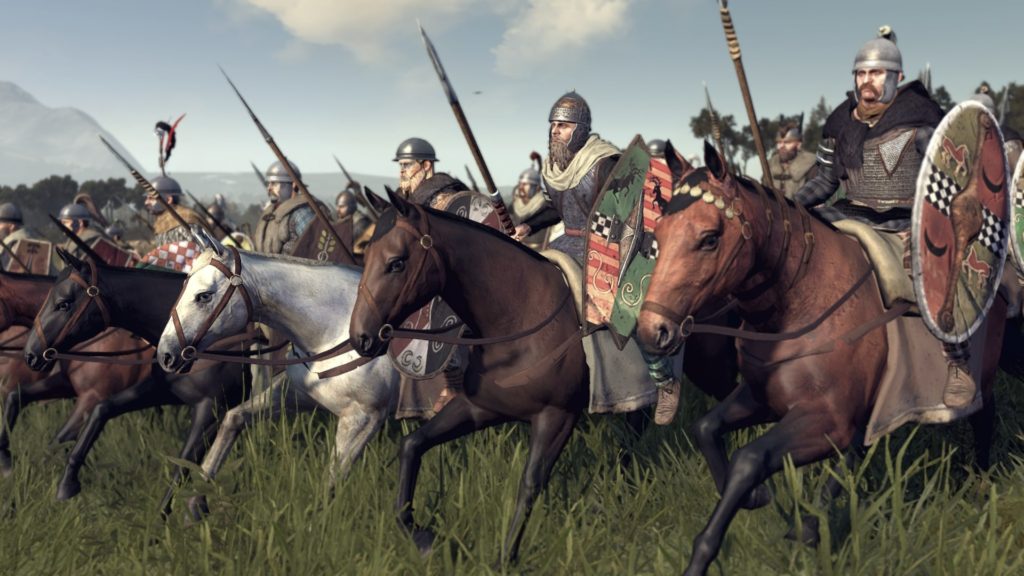
1.3 Barbarian Overhaul – Galatian Roster Preview!
The Galatians
Greetings everyone, we have another treat today from Q_Sertorius and CEMN – a Galatian preview. These units and roster revisions will be featured in our upcoming 1.3 mod update and can also be tried ahead of time in our current Barbarian submod beta pack. Check out our discord for details!
The Galatians were a Celtic people from Central Europe who invaded the Balkans during the 270’s BC, before eventually crossing to Asia Minor and settling in the Anatolian high lands. Having carved out a territory for themselves, the Galatians remained a player in Anatolian politics for nearly three centuries. They were originally composed of three tribes: the Tectosages, the Trocmii, and the Tolistobogii (a fourth tribe, the Aigosages, later joined them). They were closely related to the Scordisci and Boii, but their tribal connections extended even to southern Gaul, where a branch of the Tectosages lived (Roman authors reported finding loot from the Celtic invasion of Greece in temples belonging to the Volcae Tectosages). Due to their central location in the heart of the Hellenistic world and their constant interactions with the rival Hellenistic powers, the Galatians absorbed a great deal of Hellenic cultural influence, despite remaining culturally Celtic for much of their history.
In terms of their roster, the Galatians are strongest in melee infantry. They are brawlers par excellence, being the only playable Celtic faction which can recruit large units of Third Class swords. The Galatians are also one of two Celtic factions to get access to chariots (these are based upon Lucian, an ancient source of suspect reliability, but a source none-the-less). If nothing else, this gives them a way for their warriors to die in style. But, bold players will note that chariots can be utterly devastating against lightly-armed levies, which form substantial parts of early eastern armies. The Galatians are respectable in several other key areas, but players may quickly notice a relative weakness in long-ranged missiles and heavy cavalry, particularly in comparison with their eastern neighbors. These weaknesses are, however, easily addressed by careful augmentation with mercenary and Area of Recruitment troops (AOR) from nearby areas. A player who chooses not to rely heavily on AOR units is likely to experience quite a challenge.
The Galatians benefit a great deal from other cultural reforms as well – gaining access to experienced soldiers who have served in other Hellenistic armies at the Thureos and Thorax reforms. Thus, the Galatian roster presents the interesting historical reality of Celtic soldiers fighting for Hellenistic rulers, learning new skills and gaining new equipment, then returning to fight for their own faction. Due to their historically-attested Roman influences, the Galatians also gain access to very capable legionary units.
Galatia draws many aesthetic influences from the Hellenic world, which is reflected in unit equipment obtained through raid, trade, or even service in Hellenic armies as they often were historically. But, there are also hints of other influences having migrated through the Balkans, Thrace and settling in diverse Asia Minor. Finally, due to the warm climate of Asia Minor, many Galatians choose to go shortsleeved or even without wearing pants – perhaps inspired by their new neighbors…
1.3 Celtic Overhaul – Boii Roster Preview!
The Boii
We are back with another DeI preview, once again brought to you by Q_Sertorius and CEMN! This preview features their Boii roster revision for the upcoming 1.3 update.
The Boii were a Celtic people from Central Europe, who, like many other Celtic people, migrated widely across Europe. Starting from their homeland near what is now Prague (modern Bohemia takes its name from them), they spread down into Slovenia and across the Alps into Italy. Like many other Italian Celts, they sided with Hannibal in the Second Punic War. At one point, they successfully ambushed and massacred an entire Roman army! In the 190’s BC, however, the Romans decisively defeated them and forced them out of Italy. They settled in northern Pannonia. However, in the mid-First Century BC, the Dacians forced them to migrate again. They joined the Helvetii in their attempt to migrate through the Roman Province, were defeated, and leave the historical record as clients of the Aedui. They fought alongside Vercingetorix in his great uprising against Caesar.
In terms of their roster, the Boii are designed to focus on melee troops, with strong archers in support. Although they are relatively weak in phalanx units and cavalry, which may make popular hammer-and-anvil army compositions less powerful, the diversity and quality of their melee troops more than makes up for these weaknesses. The Boii are designed to be able to form a melee unit mainline throughout the game. At the outset, they have surprisingly powerful and cost-effective clubmen. As they progress they also gain strong line-breaking units, due partly to having the strongest axe units among the Celtic factions, but also due to their unique Sword Masters. The Boii have the distinction of having the only two-handed sword unit in the Celtic playable factions. These units are based upon some interesting archaeological discoveries in the Czech Republic, where several swords of above average size have been uncovered. While speculative, this forms the basis for a unique and powerful unit. The Boii roster also includes excellent naked champions and other sword units.
Excellent two-handed sword units and naked champions, are, however, very vulnerable to missiles. Consequently, the Boii roster includes the best archers in the Celtic world as a means of quickly and efficiently countering enemy missile units. In keeping with the Boii focus on melee combat, the Boii Night Warriors are both excellent archers and solid in melee.
Aesthetically, the Boii are inspired by their historical migrations around and across the Alps, from Gaul to northern Italy and their in-game starting location in Germanic borderlands. Their units are inspired by these different sources and they are generally warmer clothed than most other Celts. The Freeman and Warrior classes primarily draw from their Germanic neighbors due to intermingling and trade between the two peoples, whereas the Nobles primarily draw from the Alpine and northern Italic regions, from which many have acquired equipment and fashions through raid and trade.
1.3 Celtic Overhaul – Arverni Roster Preview!
Overview
As the DeI team gears up for another update coming this winter, we have targeted some upcoming changes for new beta submods that are already available to try out! One of those submods is the Celtic Overhaul from Q_Sertorius and CEMN. The main goal of this specific new beta is to revise most of the Celtic faction rosters in order to streamline and improve them both mechanically and aesthetically. We will have previews for these various roster changes, starting with the Arverni!
Celtic Overhaul by Q_Sertorius and CEMN
For the overall revision of the Celtic rosters, we wanted to provide a justification to hire each unit, at least at some point in the game. We also wanted to give each Celtic faction unique strengths and weaknesses, rooted in what historical and archaeological records we have, in a way which promoted good gameplay for each faction. In terms of unit power, we wanted to make the appearance match the stats, rather than the stats match the appearance. To that end, we took a close look at every unit’s stats to ensure that there were logical progressions. We removed a couple of units in order to reduce the bloat and repurposed others to give them more interesting roles.
Arverni Roster
In terms of roster design, we did not want to fundamentally change the Arverni roster. They were, and still are, a faction with relatively strong spear/phalanx and cavalry units. They were, and still are, relatively weak in melee infantry units. This does not mean that all their cavalry is the best in the game, nor does it mean that their melee infantry is terrible. Rather, they get great cavalry from Second Class population. They get good melee infantry from First Class population. This is the way the DeI team originally designed the Arverni and we saw no reason to change this approach. In terms of historical justification, this is driven by the fact that while swords may be the iconic Celtic weapons, spears are far more common in the archaeological record.
The boldest roster change was the decision to add actual short pike units to the Arverni late game roster. This built on their factional strength in phalanx units. While we know from Caesar that the Gauls employed Shield Walls, which were fundamentally similar to Mediterranean phalanx units, there is no direct evidence for these short pike units. It is justified by the discovery of a large number of rather large spearheads in First Century BC contexts. While this may seem to be relatively weak justification for such units, it is similar in evidentiary strength to the Boian two-handed sword units. There is some evidence to justify what makes for good gameplay. They are a logical extrapolation from the limited records we have. The result is a faction which, throughout the game, can maintain a strong mainline of phalanx units, protected on the flanks by great spear units, with slingers as their primary missile weapons, and widely-available cavalry to provide the hammer blow.
Aesthetically, besides an improved variety and visual quality of assets, one of the main goals has been to make sure unit visuals properly represent the stats and the class of the unit. For example, an armor value of 20 represents a helmet plus a leather cuirass, which will be the most common setup for that unit. But for variety, some warriors might want to showcase their bravery by not wearing a helmet or lighter armor, while another yet might wear reinforced leather or scale. But, the unit average will even out.
As for class, bright colors typically represent wealth as dyes could be expensive. Therefore, the Freeman class typically wear less colorful clothing and very basic armor and are generally shaggier and more unkempt than the Warrior class, who are a clear step up in terms of displayed wealth and equipment quality. Naturally, the Nobility carry the very best in arms and armor and flaunt their wealth with fine colorful textiles, silver and gold jewelry and eye-catching helmet decorations. Finally, Gallic art from around DeI’s timeframe depicts clean shaven men, something also mentioned by Caesar. Therefore, most Arverni nobles and a few of the warrior class won’t have any facial hair.
The Arverni reforms now lead to increased uniformity due to a powerful, centralized Celtic polity that could mass-produce simple equipment or mandate the wearing of helmets. But, all of that goes for Celts across the board. The Arverni particularly stand out as extra extravagant, with their cavalry being the fanciest of all.
We will have more previews to come as we approach 1.3 this winter. Make sure to check out this and our other beta submods on our Discord!
